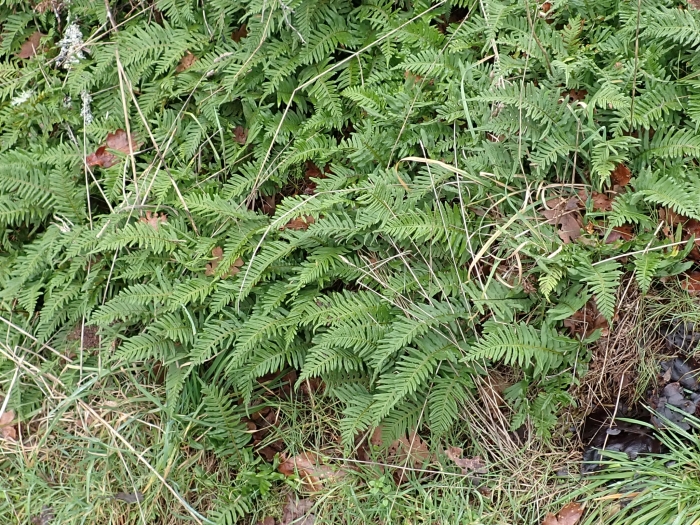Licorice Fern
(Polypodium glycyrrhiza)
Licorice Fern (Polypodium glycyrrhiza)
/
/

Ellyne Geurts
Public Domain

















































Estimated Native Range
Summary
Licorice Fern is valued for its attractive foliage and adaptability as an epiphyte, growing on trees, or as a ground cover over rocks and soil. It is often used in shaded garden areas, woodland plantings, and naturalized landscapes. In cultivation, it requires part shade to full shade, consistent moisture, and well-draining soil. While it is relatively low-maintenance, it does not tolerate drought and may require supplemental watering during dry periods. Licorice Fern is also appreciated for its medicinal properties, as the rhizome has been used by indigenous peoples for its purported health benefits.CC BY-SA 4.0
Plant Description
- Plant Type: Fern
- Height: 1-1.5 feet
- Width: 1-1.5 feet
- Growth Rate: Moderate
- Flower Color: N/A
- Flowering Season: Non-Flowering
- Leaf Retention: Deciduous
Growth Requirements
- Sun: Part Shade, Full Shade
- Water: High
- Drainage: Fast
Common Uses
Bird Garden, Deer Resistant, Drought Tolerant, Edible*Disclaimer: Easyscape's listed plant edibility is for informational use. Always verify the safety and proper identification of any plant before consumption., Erosion Control, Groundcover, Low Maintenance, Rock Garden, Street Planting
Natural Habitat
Moist, temperate rainforests and misty coastal cliffs of Northwestern North America
Other Names
Common Names: Many-Footed Fern , Sweet Root , Polypode Réglisse , Licorice Polypody
Scientific Names: Polypodium glycyrrhiza , Polypodium vulgare f. commune , Polypodium falcatum , Polypodium vulgare var. occidentale , Polypodium occidentale , Polypodium vulgare var. commune , Polypodium vulgare subsp. occidentale , Polypodium aleuticum , Polypodium vulgare subsp. commune , Polypodium vulgare subsp. falcatum , Polypodium vulgare var. falcatum
GBIF Accepted Name: Polypodium glycyrrhiza D.C.Eaton